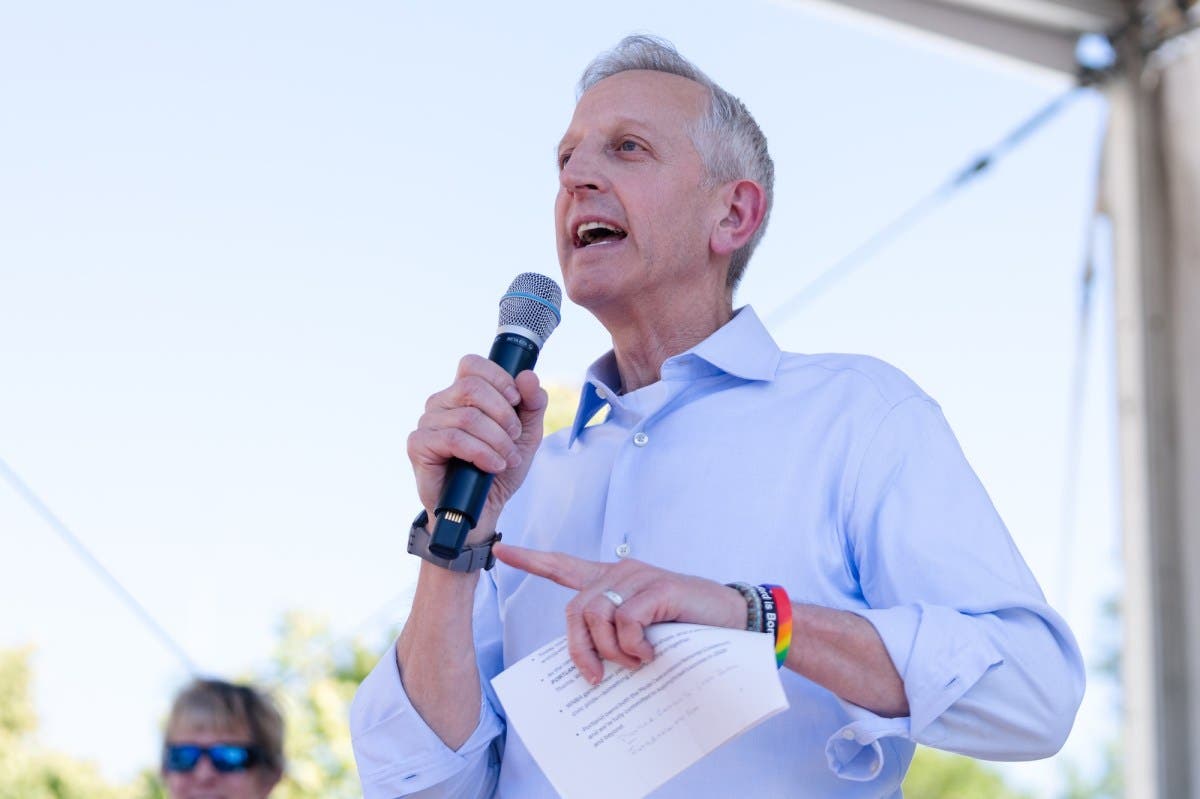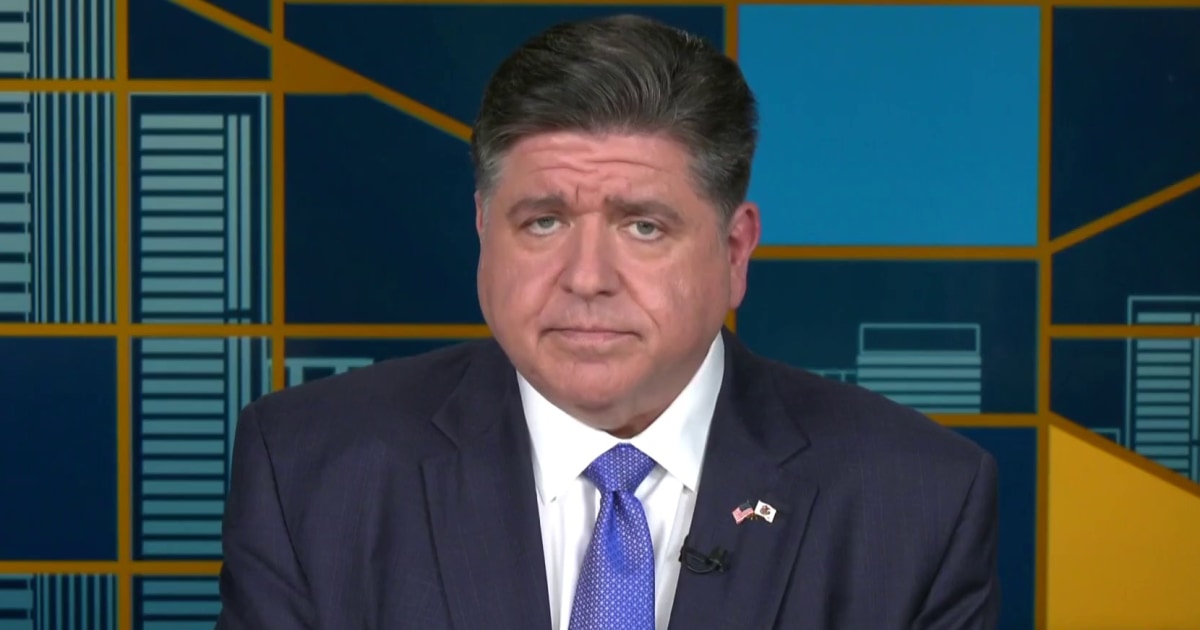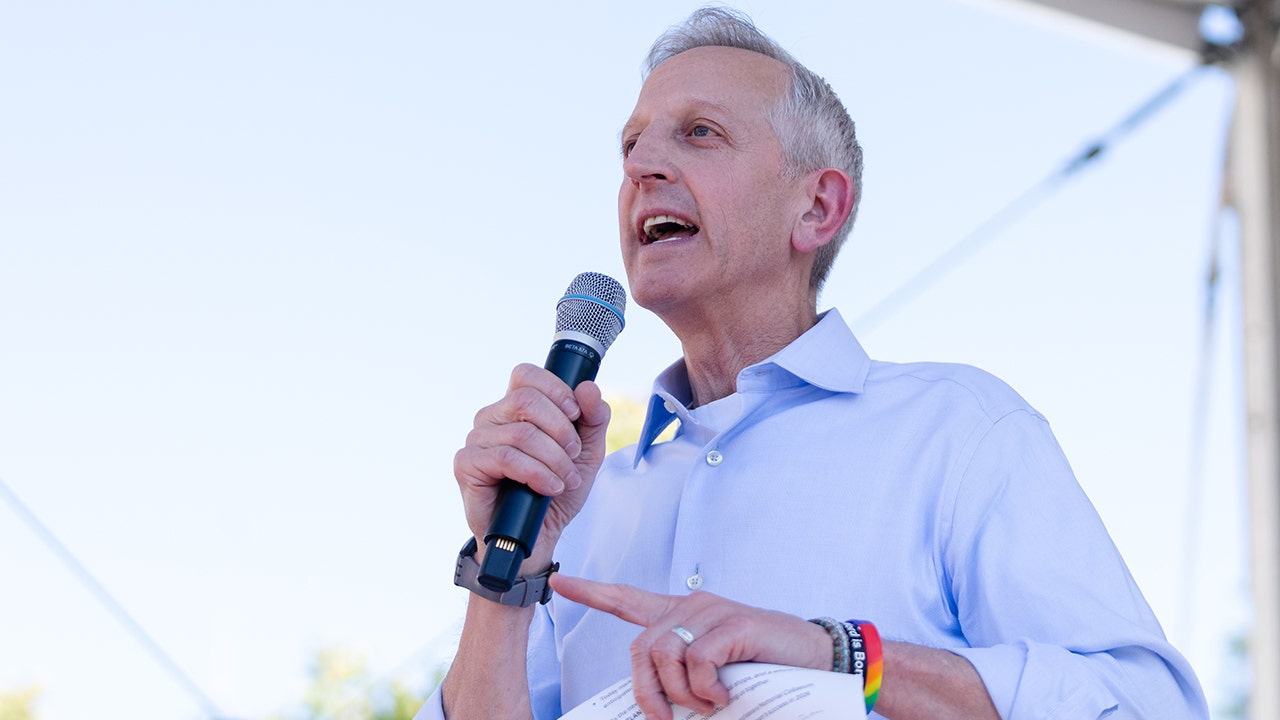This week, Homeland Security Secretary Kristi [Bimbo #2] Noem staged a bizarre photo op in Portland that appeared designed to bolster President Trump’s effort to deploy Oregon’s National Guard against ICE protesters in the city. [Bimbo #2] Noem stood on a rooftop observing protesters below, and MAGA influencers hailed it as a moment of extraordinary heroism against a powerful, implacable enemy. “[Bimbo #2] Noem just stared down violent Antifa rioters on the roof of a Portland ICE facility,” one wrote.
Alas, it turned out there were only a few protesters milling around far in the distance, including one man in a chicken suit. Intense online mockery ensued, and this buffoonish display is now at the center of a good New York Times piece, which details how the White House is relying on MAGA media personalities to spread the deceptive impression of a city in large-scale civil collapse.
However, the Times piece commits one misstep: It keeps describing those MAGA personalities as “provocateurs.” In fact, they are propagandists. Mainstream news outlets appear uncomfortable wrestling with the degree to which pro-Trump media figures practice propaganda undertaken in bad faith toward expressly instrumental ends. We need them to get past that.
This may seem like a churlish objection given that the Times piece is well reported and informative. But this euphemistic “provocateur” language risks diminishing the force and quality of the paper’s own reporting. The piece notes that federal and state law enforcement have reported that protests there are small-scale, and nothing like the civil breakdown depicted by Trump to create a rationale to federalize Oregon’s National Guard (that’s temporarily blocked in court). Then it reports this:
But in the bifurcated media world of 2025, one side’s comparative calm is the other’s “hellscape” — as the White House described Portland on Wednesday — and the narrative that the Trump administration has wanted has been supplied by a coterie of right-wing influencers elevated by Mr. Trump himself.
The piece also refers to “dueling versions of reality.” But this isn’t a case of one side genuinely seeing things one way (as “comparative calm”) and the other side genuinely seeing them differently (as a “hellscape”). It’s a case of one side (law enforcement, local journalists) trying to faithfully depict what’s really happening, and the other side (MAGA) concertedly lying about it to serve corrupt ends that are comprehensively, even intentionally disconnected from facts on the ground.
One influencer, for instance, accuses the Portland police chief of “allowing violent terrorists” to “run the city,” which is horseshit of the highest order. The Times piece quotes another MAGA personality suggesting that right wing agitators might be handing out flags and trying to bait protesters into burning them.
Other MAGA figures have described the city as a “war zone” and “under siege by antifa” or “fallen to antifa” and even in a “state of open insurrection.”
Indeed, as Media Matters documents, the gap between what MAGA media are portraying and what local press is reporting (the protests are mostly small and peaceful) has grown to enormous proportions. As one reporter put it, many protesters are “in pajamas, sharing pastries, throwing a frisbee, and playing board games.”
The point is not that there are zero examples of leftist protesters getting violent—as the Times notes, a handful of leftists are getting prosecuted for just that. Rather, it’s that none of this remotely matches what Trump and MAGA are conjuring into being.
The word “provocateur” doesn’t do justice to any of this—and we don’t mean to pick on the Times here, as that euphemism is constantly used elsewhere, too. “Provocateur” implies that all this is akin to plucky showmanship—political theater designed to needle, satirize, provoke, and entertain, as opposed to manipulate and deceive.
Some of these personalities probably do see themselves, to some degree, as putting on a show. But the broader aim of all this agitprop is far uglier. Trump has employed a form of state propaganda that may be unrivaled by any presidency in modern memory, and these MAGA influencers are generating material for that vile effort.
This is partly about producing endless online content to keep the MAGA base well-fed. Noem has chroniclers around her capturing her every move: When she gazed down on the man in the chicken suit, several depicted her as bravely confronting antifa mobs, even though the man stood with a few other people hundreds of feet away.
But the absurdity of this episode doesn’t diminish how sinister and carefully elaborated much of this propaganda truly is. When ICE raided an apartment complex in Chicago, where Trump is also trying to deploy various National Guards, state propagandists produced a slick video portraying it as a heroic operational triumph against a dangerous, determined, dug-in enemy. Stephen Miller declared that the complex was “filled” with Tren de Aragua “terrorists.”
Yet as Aaron Reichlin-Melnick points out, all of two people were identified as possible members of the gang, per CNN. While some others reportedly had criminal histories (some just involving drug possession), surely that doesn’t justify a massive hypermilitarized operation that terrorized scores or hundreds of people (the building has 130 units) and dragged children into the street.
If Miller were being honest about his true project, he’d forthrightly admit that he consciously intends all this as deliberate propaganda. It’s geared toward establishing unlimited discretion for Trump to simply invent emergencies with an eye toward vastly expanding presidential power. Miller wants Trump to bulldoze the courts into surrendering on fact-finding, into granting him quasi-absolute authority to declare into existence—merely by fiat—the conditions needed to justify whatever law enforcement or domestic military operation that Trump (i.e., Miller) launches next, including ones targeting Americans.
If inflicting these operations on civilian populations incites violence in return, from Miller’s perspective that’s surely all the better. Asawin Suebsaeng reports for Zeteo that Trump advisers are nudging him to invoke the Insurrection Act if necessary to circumvent judicial checks on these authorities. That’s plainly what Miller hopes for.
Yet the conventions of political reporting today are poorly suited to capturing this naked use of sheer pretexts and the bottomless bad faith they rely upon.
Headlines in the Times, for instance, regularly fall short in just this way. They treat Trump and his administration’s stated rationales as things they authentically believe, whether it’s the claim that Harvard violates students’ civil rights to justify his state crackdown on academic freedom … or the insistence that Portland is under siege from domestic terrorists to justify deploying the military there.
In these cases, casual readers will have zero inkling that these are bad-faith pretexts as opposed to genuinely held positions. The media needs to find new tools to convey these basic realities.
Propagandists are not “provocateurs.” Trump’s stated grounds for his abuses of power are not actual reasons, they are pretexts created for purely instrumental ends. And Kristi [Bimbo #2] Noem did not “stare down” mobs of antifa terrorists in Portland. That’s because there isn’t any serious network of organized leftist violence in the United States, no matter how loudly Miller shrieks otherwise. Grasping how committed MAGA is to such industrial-scale deceptions is critical to getting this broader moment right.









